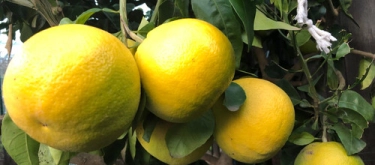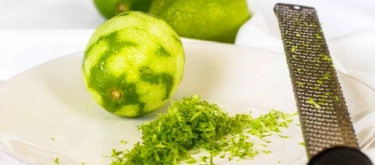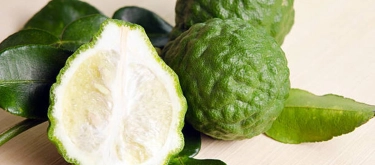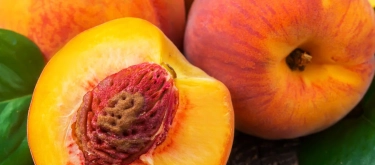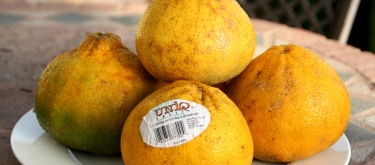Orange: Taste Profile, Aroma, Benefits and Health Risks
The orange (Citrus sinensis) is one of the most widely consumed fruits globally, cherished for its vibrant flavor, refreshing aroma, and nutritional richness. Originating in Southeast Asia and now cultivated extensively worldwide, especially in Mediterranean and subtropical climates, oranges have become a beloved culinary ingredient, consumed fresh, juiced, or incorporated into diverse recipes ranging from desserts to savory dishes.
Oranges are suitable for vegetarians, vegans, and gluten-free diets. However, citrus allergies exist and individuals sensitive to citrus fruits should avoid oranges. Also, due to their acidity, oranges may irritate individuals with gastrointestinal conditions, such as acid reflux or ulcers.
What does Orange taste like?

Complete Sensory Description
Taste
The orange’s flavor is characterized by an invigorating balance of sweetness and acidity. Predominantly sweet varieties, such as Navel or Valencia oranges, offer a pronounced, juicy sweetness tempered by mild tartness, creating a pleasingly refreshing taste. Less sweet varieties, like Seville oranges, present stronger acidity balanced with subtle bitterness. Oranges also contain faint aromatic undertones—floral and herbaceous notes, sometimes slightly spicy—providing additional complexity. The citrus flavor intensifies when freshly squeezed or zested, releasing concentrated essential oils and brighter, more vibrant taste.
Aroma
Oranges possess a distinctly fresh, citrus aroma, bright and invigorating, with pronounced notes of citrus oils (limonene), floral fragrances, and mild sweetness. Peeling or zesting releases aromatic compounds immediately, filling the air with lively, uplifting, and refreshingly clean scents, enhancing culinary appeal significantly.
Texture
Oranges offer juicy, succulent textures, composed of tender, juicy segments encased within fibrous membranes. Each segment provides a burst of sweet juice upon biting. The texture varies slightly between varieties—Navels being particularly juicy and tender, while others like Blood oranges offer slightly firmer textures.
Appearance
Oranges typically showcase bright orange to deep orange-red skin, often thick and textured, housing segmented flesh inside. Flesh color varies from pale orange-yellow (Valencia, Navel) to vivid red (Blood oranges), adding visual diversity and appeal in culinary presentations.
In-depth Flavor Analysis
The distinctive taste of oranges originates from a unique interplay of sugars, acids, aromatic compounds, and essential oils present within the fruit. Primary sweetness stems from natural sugars—primarily fructose, glucose, and sucrose—which vary significantly depending on orange type, ripeness, and cultivation methods. Acidity, primarily derived from citric acid, balances this sweetness and provides oranges’ characteristic tangy profile.
The distinct aroma and subtle bitterness found in the peel and zest result mainly from the presence of volatile essential oils, especially limonene, a terpene responsible for oranges’ characteristic citrus fragrance and flavor intensity. Zesting releases these aromatic compounds instantly, imparting potent citrus fragrance and heightened culinary interest.
Flavor variability emerges significantly from growing conditions, ripeness levels, and variety type. Warm climates generally produce sweeter, juicier oranges with lower acidity, while cooler climates result in sharper acidity, more pronounced flavor complexity, and denser aromatic compounds. Seasonal variations also strongly affect taste, aroma, and sweetness levels.
Varieties and Culinary Applications
Navel Oranges
- Sweet, seedless, ideal for fresh eating, salads, or juicing.
- Widely available, popular for snacks and desserts.
Valencia Oranges
- Juicy, flavorful; perfect for juicing, desserts, marmalades, and culinary use due to balanced sweetness and acidity.
Blood Oranges
- Deep-red flesh, raspberry-like flavor; excellent in desserts, cocktails, gourmet salads, or creative culinary preparations.
Seville Oranges
- Highly acidic, bitter-sweet variety used mainly for marmalades, sauces, marinades, or culinary preparations needing acidity.
Culinary Versatility
Oranges enhance diverse recipes:
- Fresh consumption: snacks, fruit salads, breakfast dishes.
- Juices & smoothies: freshly squeezed orange juice, blended drinks.
- Baked goods: cakes, muffins, tarts, pastries, marmalades.
- Savory dishes: marinades, sauces (orange-glazed chicken or duck), vinaigrettes, seafood accompaniments.
- Desserts: creams, sorbets, candies, and puddings.
Selection and Storage
Selecting Quality Oranges
- Choose firm, heavy oranges with smooth, brightly colored skin.
- Avoid fruits with soft spots, mold, shriveled skin, or dull appearance.
Storage Recommendations
- Store oranges at room temperature away from sunlight for up to a week or refrigerate (4–8°C / 39–46°F) to extend freshness up to 2–3 weeks.
- Refrigerated storage extends shelf life and preserves freshness and juiciness.

Nutritional Insights
-
Vitamin C (Ascorbic Acid):
Excellent source, essential for immune health, collagen synthesis, and antioxidant protection against cellular damage. -
Dietary Fiber:
Contains soluble fiber, supporting digestion, cholesterol regulation, and healthy gut function. -
Rich in Potassium and Folate:
Potassium regulates blood pressure and cardiovascular health, while folate supports neurological function, cellular health, and pregnancy nutrition. -
Low-Calorie, Hydrating Fruit:
Oranges are ideal for balanced diets, providing hydration, sweetness, and valuable nutrients without excess calories.
Expert Insights & Culinary Tips
-
Flavor Pairings:
Pair oranges excellently with chocolate, cinnamon, cloves, ginger, cardamom, vanilla, honey, chicken, duck, fish, seafood, leafy greens, or cheeses like feta or goat cheese. -
Maximizing Juice Yield:
Roll oranges firmly on the countertop before squeezing to increase juice extraction significantly. -
Balancing Acidity:
To balance high acidity, pair oranges with sweetness (honey, sugar) or creamy ingredients, enhancing harmony and flavor depth.
Interesting and Curious Facts
- Oranges originated in Asia, arriving in Europe via Arab traders in medieval times and rapidly becoming essential in global culinary practices.
- Orange peel historically served medicinal purposes, preserved as candied peel, or infused in beverages and liquors like Curaçao or Grand Marnier.
- Oranges symbolize prosperity, luck, and health in many cultures, prominently featured in celebrations, rituals, and traditional festivities globally.
Harm and Dietary Considerations
-
Citrus Allergies:
Individuals allergic to citrus fruits should strictly avoid oranges to prevent reactions. -
Acid Sensitivity:
High acidity levels may irritate gastrointestinal conditions (gastritis, reflux), requiring moderation. -
Interaction with Medications:
Individuals taking medications sensitive to citrus compounds (e.g., certain statins or antihypertensives) should consult healthcare providers regarding safe orange consumption.
Religious Dietary Considerations
Oranges are generally permissible and widely accepted in all major religious dietary traditions:
- Islam: Permissible (Halal).
- Judaism: Permissible (Kosher, Parve).
- Hinduism and Buddhism: Permissible; often featured in rituals and dietary practices.
- No known restrictions exist for Christianity or other global religions.
Final Thoughts & Sensory Journey
Oranges delight the senses with bright sweetness, refreshing acidity, and vibrant fragrance. Culinary versatility, nutritional excellence, and widespread global appeal underscore their enduring popularity, enhancing dishes ranging from simple snacks and beverages to sophisticated culinary masterpieces.
Resources
- McGee, H. (2004). On Food and Cooking: The Science and Lore of the Kitchen. Scribner.
- USDA FoodData Central (2023). Citrus Fruits Nutritional and Storage Guidelines.
- Food and Agriculture Organization (FAO). (2021). Global Citrus Fruit Cultivation, Culinary Uses, and Nutritional Insights.




